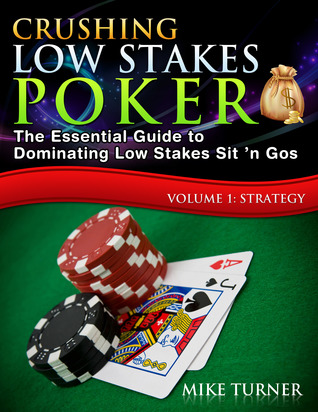Kindle Notes & Highlights
by
Mike Turner
Read between
January 6 - January 7, 2020
Relative position is your position relative to the likely aggressor in the hand (typically the pre-flop raiser). The closer you are to the right of the likely aggressor, the better your relative position is.
Whenever a pot represents around 20-25% of your stack, strongly consider moving in if you have some kind of a hand, a good draw, or if you believe you have good fold equity for a bluff.
The main weaknesses of the opponents you will typically find in low stakes games are that they call too much, bluff too much, and play too many hands.
Your general style of playing early on in the game should be tight-cautious. During low blind levels, you should play very tight as regards your pre-flop raises and generally play pretty cautiously both in your pre-flop and post-flop play.
Do not overplay your made hands and do not make the mistake of making really big flop bets to try and deny your opponent proper drawing odds.
Because you have a significant skill edge over your opponents in a low stakes game, there is no need to get involved when you feel you are only a slight favorite in the hand, especially early on in the tournament. Avoid such marginal spots: the skill edge you have means you will get many better opportunities in future hands.
Seeing many cheap flops with speculative hands is a much better strategy to follow in a low stakes game than calling raises with mediocre/good high-card hands, even when you can expect to be ahead of your opponent’s raising range.
Against loose-passive players, you should not make a continuation bet if you don’t have a good hand. Trying to bluff loose-passive players is never a good idea!


